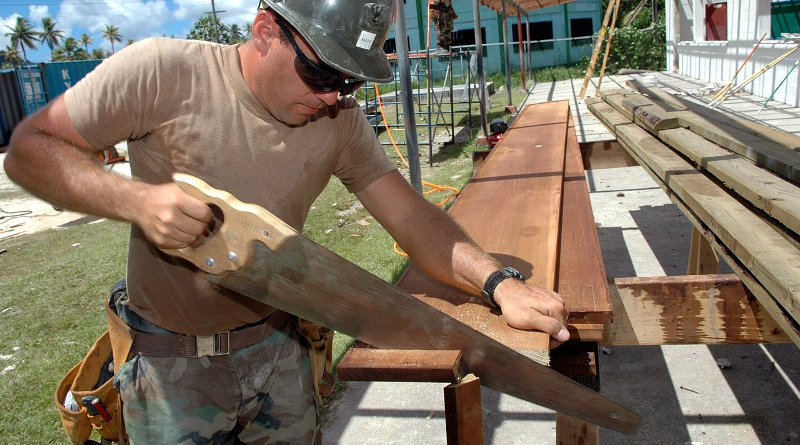When you have to cut wood, how do you know which type of saw you should use? Choosing the right saw for the job can make a huge difference to both how easy the job is to complete and the finish of the cut.
Using a fret saw when you should be using a rip saw, or a tenon saw when you should be using a panel saw will not only make the DIY job harder, but could mean the end result is not as good as it should be.
This guide looks at the different types of hand saw, and they different jobs they should be used for.
Cutting Sheets of Timber/Boards
– Panel Saw, Crosscut Saw, Rip Saw
Long cuts in sheets of timber or boards require a large bladed saw, and not just because it is quicker. A large bladed saw will also help to keep the cut straight. Mark out your cutting line carefully with a pencil and always cut slightly on the waste side of the wood. You should only apply pressure on the forward stroke and try to use the full length of the blade.
Detail cuts or Joints
– Dovetail Saw, Tenon Saw
Smaller, more detailed cuts require a greater degree of control, so specialised saw such as tenon saws should be used. Clamping the wood to be cut in a vice or workmate will make any sawing job much, much easier. As always, mark out clearly using a pencil and cut slightly on the waste side of the mark. Cut only with the forward stroke of the blade and use the whole of the blade if possible.
Cutting Shapes and Curves
– Bow Saw, Coping Saw, Fretsaw, Padsaw
All of these saws have one thing in common, more teeth to give a cleaner, finer cut. When cutting out shapes (in a sheet of timber for example) you need to first drill a hole on the waste side of your mark. Make sure this is big enough to accept the blade of your saw and use it as the starting point. It is always better to leave a small amount of waste to file off later, rather than risk cutting into the body of the wood.
Hand Saws
Saws with flexible, unsupported blades.
Ripsaw
Ripsaws are designed for cutting solid timber along its length. Alternate teeth along its length are bent out in different directions so that the groove or kerf cut in the timber is wide enough to stop the saw catching or snagging. Many saws are designed this way.
Cross-cut Saw
Cross-cut saws are specifically designed to be used to cut timber across the grain. The teeth, which are filed on alternating edges, cut both sides of the kerf at once and remove the wood fibres between them. This helps to stop the fibres tearing when cutting across the grain.
Panel Saw
Designed for cutting man-made boards like hardboard, panel saws have similar teeth to a cross-cut saw, only smaller. This cuts a much finer kerf and there is less risk of splitting the wood on either side of the cut.
Backsaws
Saws with a metal reinforcing strip along the back of the blade.
Tenon Saw
A good general purpose woodworking saw, the Tenon saw has small teeth which are filed on alternating edges (like a Cross-cut saw). Especially good for cutting large joints.
Dovetail Saw
Dovetail saws are most often used for fine woodworking jobs. The small teeth of a dovetail saw are designed to cut along the grain of the wood and, specifically, for cutting dovetail joints for cabinetmaking.
Gents Saw
The Gents Saw is a smaller, and often cheaper, version of a Dovetail saw. It is generally used for the same purposes (cutting joints for cabinet work, etc), but differs slightly in design, having a straight handle.
Frame Saws
Saws with thin metal blades held in a stiff metal frame.
Coping Saw
A very useful tool for cutting awkward shapes in both solid wood and man-made boards. The coping saw has a very thin blade, with fine teeth, meaning it is easy to change the direction of the cut mid way through. A variety of blade types are available.
Fret Saw
Similar in design to the Coping saw, a fret saw has an even thinner blade designed for very fine cuts in thin material. Particularly useful for cutting holes in hardboard or plywood sheets. As with a coping saw, there are several grades of blade available.
Padsaw (keyhole Saw)
Not actually a frame saw, as the blade of a Padsaw is not held in a frame. Fretsaws are used to cut holes in both solid wood and man-made boards. Used widely to cut the holes in doors for the letterbox, keyhole, etc. The blades are generally pretty strong, meaning that you can cut quite thick wood if used with care.







